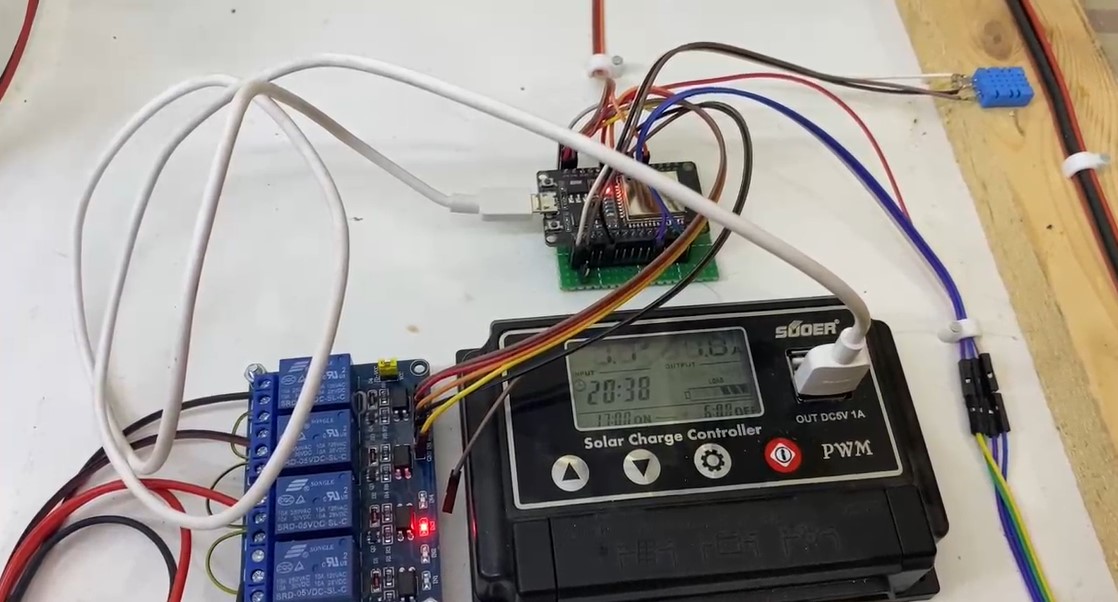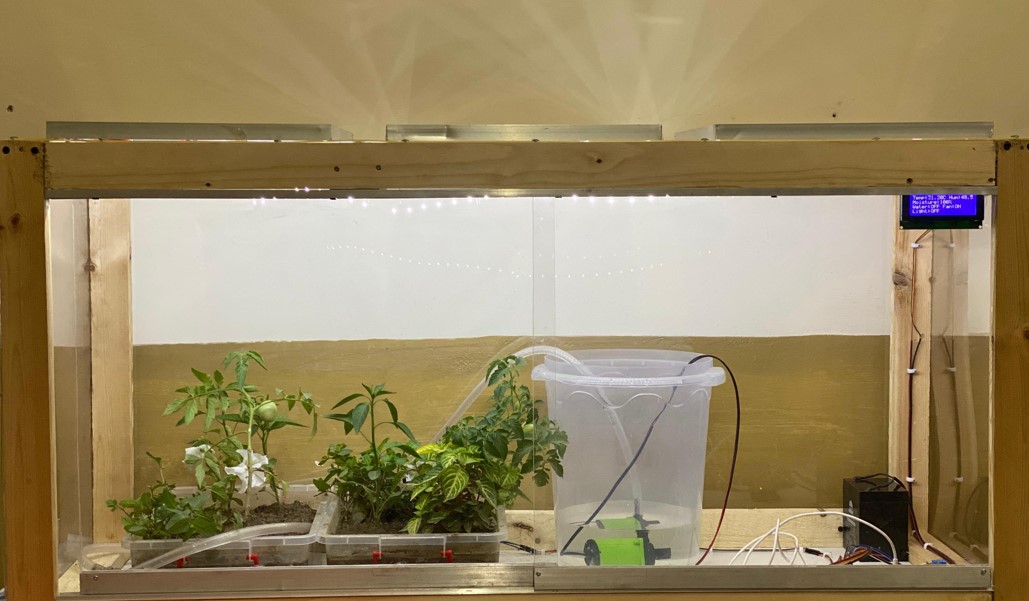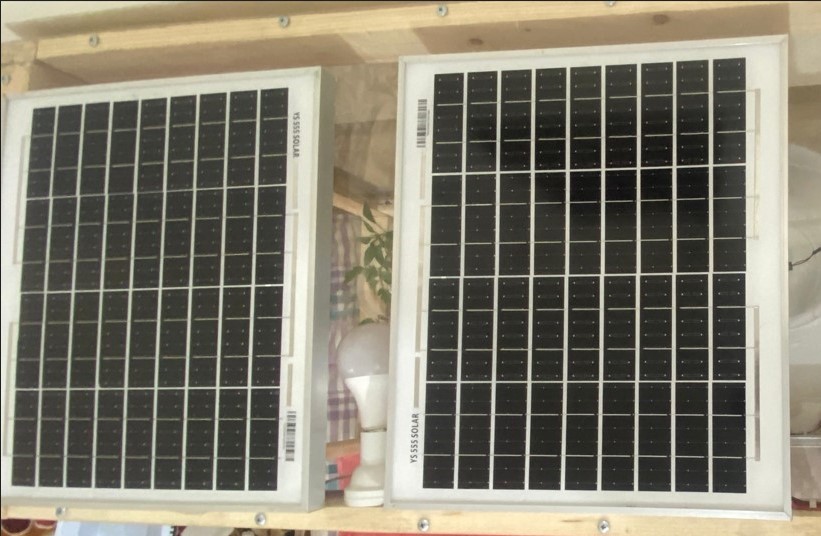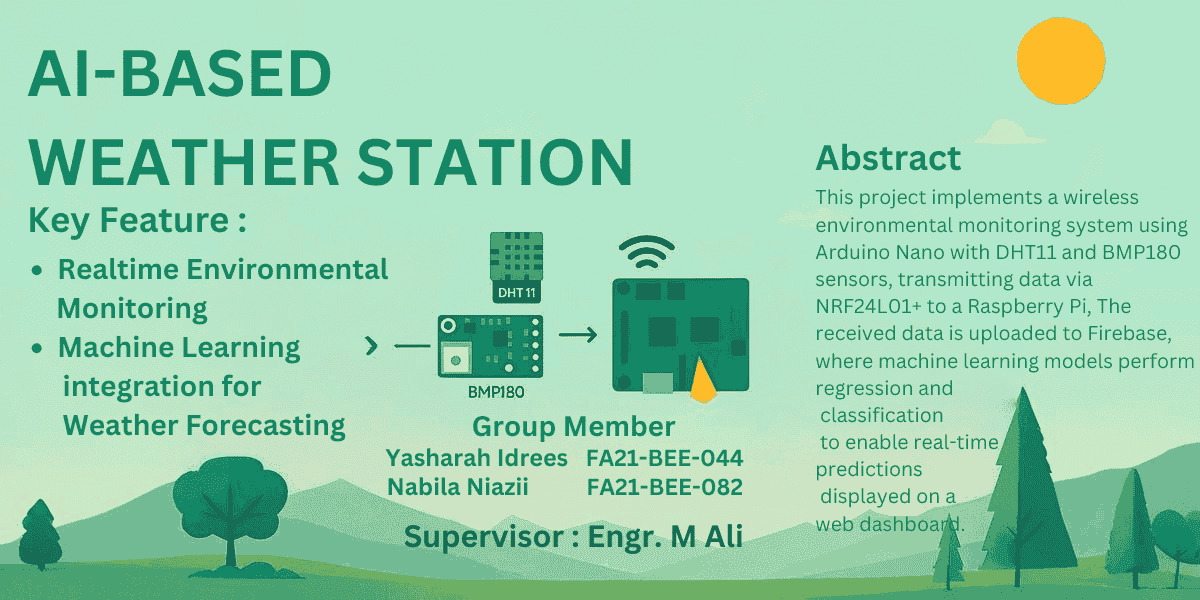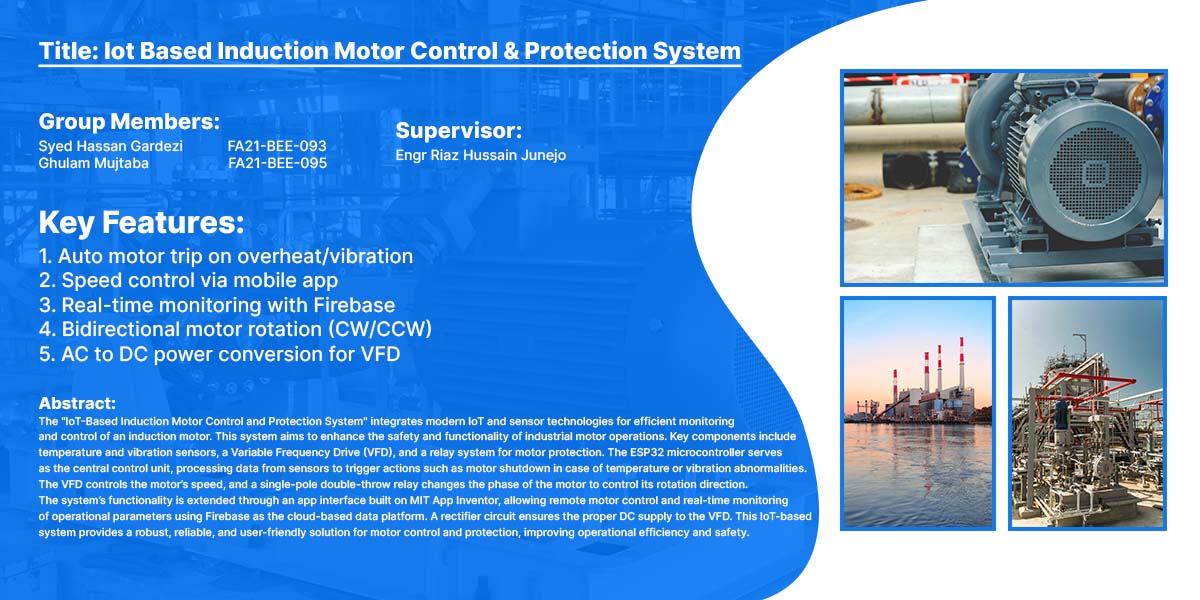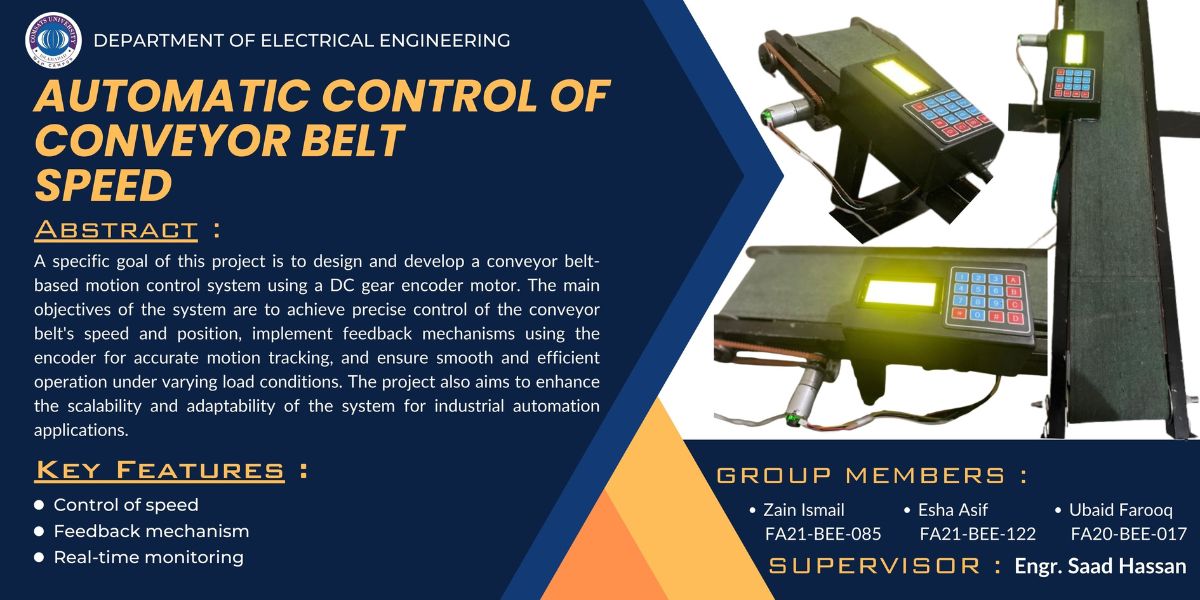Objectives
The objective of this final year project is to design and develop an efficient, solar-powered, self-regulating greenhouse ecosystem aimed at promoting sustainable and intelligent agriculture. The core goal is to create an automated environment for plant growth that eliminates the need for constant human supervision, reduces energy consumption, and optimizes water usage — all while remaining cost-effective and environmentally friendly.
This system is specifically designed to address the challenges faced by farmers in resource-constrained or off-grid rural areas, where traditional electricity supply is unreliable and manual monitoring of crops is time-consuming and inefficient. By harnessing solar energy, the project ensures continuous operation even in the absence of grid power, promoting energy sustainability and enabling agricultural productivity in remote locations.
At the heart of the system is the ESP32 microcontroller, which integrates multiple sensors to continuously monitor temperature, humidity, and soil moisture levels. Based on real-time sensor data, the ESP32 processes environmental conditions and activates various actuators including DC fans for temperature control, water pumps for soil irrigation, and LED lights (if needed) to supplement light for plant growth. These components are powered by a compact solar panel and 12V battery system, making the unit completely independent and self-sufficient.
The system is designed with modularity and expandability in mind, allowing future integration of additional sensors or control modules. It avoids the use of Wi-Fi or Bluetooth to reduce complexity and increase system reliability in rural areas. Moreover, the system uses standard relays to control loads and provides reliable switching without the need for advanced power electronics.
In addition to supporting sustainable farming, this project serves as a hands-on learning platform for embedded systems, renewable energy integration, and sensor-based automation. It demonstrates how simple, low-cost technologies can be applied to solve real-world problems in agriculture and environmental monitoring.
Overall, the main objectives of the project are:
• To automate the internal environment of a greenhouse using real-time sensor feedback.
• To reduce water waste and energy consumption through smart irrigation and ventilation.
• To ensure independent operation using solar energy, making it ideal for remote locations.
• To contribute toward sustainable farming practices that improve yield and minimize human labor.
• To create an affordable, scalable, and easy-to-maintain solution that can be replicated and deployed in local farming communities.
Socio-Economic Benefit
The Solar-Powered Self-Regulating Greenhouse Ecosystem offers a wide range of socio-economic benefits, particularly for low-income farmers, remote communities, and regions with unreliable access to electricity or agricultural infrastructure. By combining automation with renewable energy, the project not only enhances agricultural productivity but also contributes to environmental conservation, economic upliftment, and rural development.
One of the primary socio-economic benefits of this project is cost reduction. Traditional greenhouse systems often require constant manual monitoring and are heavily reliant on electricity from the grid, which can be expensive or inaccessible in rural areas. By using solar power, our system eliminates recurring electricity costs, making it more affordable in the long term. Additionally, the automation of irrigation and ventilation reduces the need for labor, thereby saving time and money for small-scale farmers who often have limited resources.
The project supports sustainable agriculture by promoting efficient use of natural resources. The system only irrigates when the soil moisture level falls below a specific threshold, helping to conserve water — a critical resource in water-scarce areas. Moreover, controlled ventilation maintains optimal temperature and humidity levels, which can lead to healthier crops and increased yield, even in extreme climate conditions.
In terms of employment and entrepreneurship, this project opens new opportunities for young engineers, technicians, and local fabricators to build, install, and maintain such systems in their communities. It can also serve as a model for small businesses or startups focusing on agri-tech solutions, driving innovation and technological adoption in the agricultural sector.
From a social perspective, the project empowers farmers by providing them with a reliable tool that improves crop quality and consistency. This can lead to better market access, higher income, and improved food security at the community level. In regions where agriculture is the primary source of livelihood, such innovations can contribute significantly to poverty reduction and rural economic development.
Environmentally, the project promotes clean energy adoption and climate resilience. By replacing traditional power sources with solar energy, the greenhouse reduces carbon emissions and dependency on fossil fuels. The system’s self-regulating nature also helps minimize crop loss due to overheating or water stress, protecting farmers from climate-induced agricultural risks.
In summary, this project offers:
• Reduced operational costs for farmers.
• Conservation of energy and water.
• Increased crop productivity and food security.
• Job creation and entrepreneurial potential in rural areas.
• Enhanced resilience to climate variability.
• Support for clean, green, and sustainable farming practices.
Methodologies
The methodology for this project involves a systematic, step-by-step approach combining hardware integration, control logic design, and renewable energy application to build a fully functional and autonomous greenhouse system. The development process is divided into the following key phases:
1. Requirement Analysis and System Design
The project began with a thorough analysis of the environmental conditions required for plant growth and the challenges faced by farmers in off-grid or low-resource areas. Based on this analysis, the core components of the system were identified: a solar power unit, a control system based on the ESP32 microcontroller, sensors for monitoring conditions, and actuators for controlling the environment.
2. Component Selection and Hardware Setup
The ESP32 microcontroller was selected for its low power consumption and ability to interface with various sensors. The system uses temperature and humidity sensors (e.g., DHT11 or DHT22), a soil moisture sensor, and a light sensor (optional). For actuation, standard relays are used to control a DC fan, a water pump, and lighting. Power is supplied through a 12V solar panel setup, connected to a charge controller and a 12V 5Ah lithium-ion battery to store energy and ensure 24/7 operation.
3. Circuit Design and Prototyping
The hardware circuitry was developed on a breadboard during the prototyping phase and later transferred to a PCB or a soldered board for a robust final build. Proper safety measures, such as fly back diodes and voltage regulators, were included to protect components.
4. Embedded Programming and Control Logic
The ESP32 was programmed using the Arduino IDE. The code continuously reads data from the connected sensors and compares it against predefined threshold values. Based on the readings:
• If the temperature exceeds the threshold, the fan is activated.
• If the soil moisture level drops below a certain level, the water pump is triggered.
• If sunlight is insufficient (optional), a grow light can be switched on.
Each control action is handled using digital I/O pins and timed logic to ensure efficient energy usage.
5. Power Management Integration
The solar power system was configured to ensure uninterrupted operation. A PWM solar charge controller manages battery charging, while power routing ensures that the ESP32 and actuators receive stable voltage levels. A voltage step-down module (e.g., LM2596) is used to safely power the ESP32 from the 12V battery.
6. Testing and Optimization
The complete system was tested in a small-scale greenhouse model. Environmental conditions were varied artificially to test system response and reliability. Several iterations were made to fine-tune the sensor thresholds, delay timings, and energy efficiency.
7. Final Assembly and Enclosure
All components were housed in a weather-resistant enclosure to protect the electronics from humidity and dust, ensuring durability in agricultural environments.
Outcome
The Solar-Powered Self-Regulating Greenhouse Ecosystem project successfully achieved its core objectives and demonstrated the potential of low-cost automation and renewable energy in the agricultural sector. The following outcomes were realized as a result of the project:
1. Autonomous Environmental Control Achieved:
The system was able to monitor and regulate temperature, humidity, and soil moisture without human intervention. Real-time sensor data was effectively used to trigger the DC fan, water pump, and other connected devices, maintaining ideal growing conditions for plants.
2. Solar-Powered Operation Validated:
The greenhouse operated entirely on a 30W solar panel and a 12V 5Ah battery system, validating the system’s viability in off-grid and rural environments. The system proved to be energy-efficient and environmentally sustainable.
3. Reliable Hardware Integration:
ESP32 was successfully integrated with sensors and relays to form a stable embedded control system. The design was robust, scalable, and tested under variable environmental conditions to ensure continuous operation.
4. Water and Energy Efficiency:
The automated irrigation system conserved water by activating only when soil moisture levels dropped below a set threshold. Solar energy use minimized power consumption, reducing operational costs and environmental impact.
5. Cost-Effective and Scalable Model:
The project demonstrated that smart agriculture solutions can be built using affordable and easily available components. The prototype is scalable and can be expanded with additional features like GSM alerts, data logging, or app integration in future iterations.
6. Educational and Practical Value:
The project provided practical experience in embedded systems, renewable energy, sensor networks, and control systems. It served as a hands-on learning platform for applying engineering knowledge to solve real-world agricultural problems.
7. Potential for Real-World Implementation:
Due to its affordability, independence from the grid, and minimal maintenance requirements, the system has strong potential for adoption by small-scale farmers, particularly in rural or underdeveloped regions of Pakistan and beyond.

